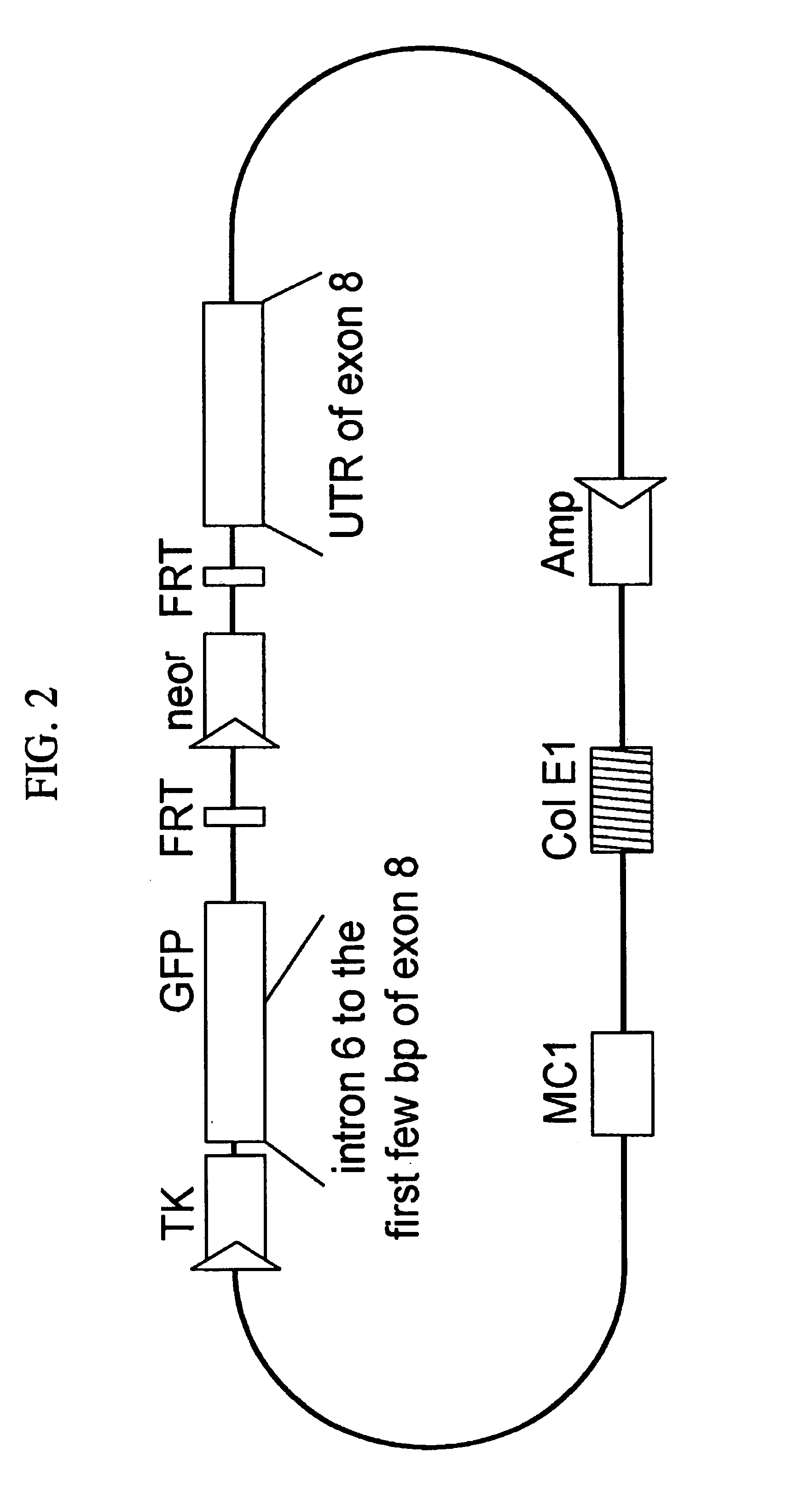Mice heterozygous for WFS1 gene as mouse models for depression
a mouse model and heterozygous gene technology, applied in the field of molecular biology, can solve the problems of difficult to diagnose disorders, patients are often reluctant to seek medical attention, and psychoanalytic approaches alone are often ineffective at providing relief for disorders
- Summary
- Abstract
- Description
- Claims
- Application Information
AI Technical Summary
Benefits of technology
Problems solved by technology
Method used
Image
Examples
example 1
Construction of a WSF1 Knockout Vector
[0156]This example details exemplary methods and compositions for constructing WFS1 vectors to be used in making the animals accordance with the present invention. An exemplary WFS1 knockout vector for use in homologous recombination is depicted in FIG. 2 which comprises the tk negative selection marker, a region comprising a region from intron 6 through to the first few base pairs of exon 8 linked to a GFP marker, a neomycin resistance marker and the UTR of exon 8.
[0157]The following procedure was conducted to isolate a mouse genomic clone containing at least a substantial portion of the murine WFS1 gene, for use in designing a vector to create transgenic WFS1 mutants. Oligonucleotide PCR primers were designed based on the mouse cDNA sequences and a human WFS1 genomic map that would be predicted to be within exons 2 and 8. These exons were chosen because they were large enough to yield large PCR products and because they contained the 5′→3′ end...
PUM
| Property | Measurement | Unit |
|---|---|---|
| Time | aaaaa | aaaaa |
| Responsivity | aaaaa | aaaaa |
| Pharmaceutically acceptable | aaaaa | aaaaa |
Abstract
Description
Claims
Application Information
 Login to View More
Login to View More - R&D
- Intellectual Property
- Life Sciences
- Materials
- Tech Scout
- Unparalleled Data Quality
- Higher Quality Content
- 60% Fewer Hallucinations
Browse by: Latest US Patents, China's latest patents, Technical Efficacy Thesaurus, Application Domain, Technology Topic, Popular Technical Reports.
© 2025 PatSnap. All rights reserved.Legal|Privacy policy|Modern Slavery Act Transparency Statement|Sitemap|About US| Contact US: help@patsnap.com


